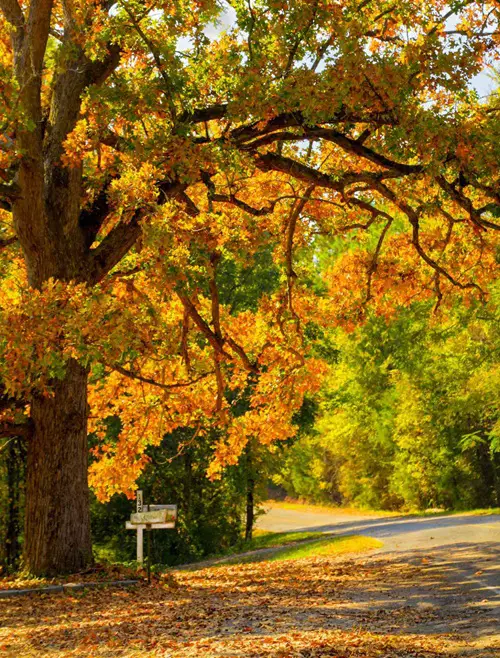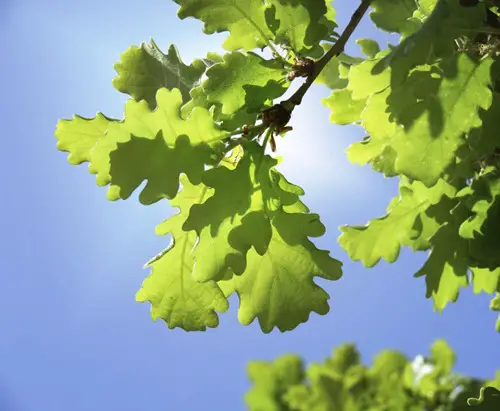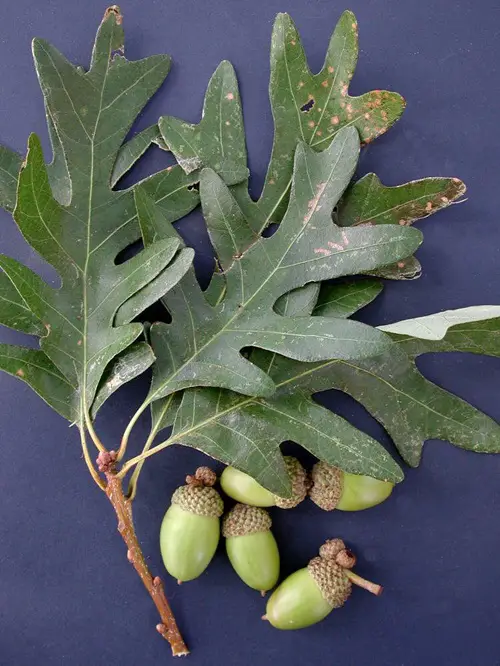Here’s a guide on Oak Tree Leaves Identification, Benefits, and Uses that will help you understand them in detail!
Oak Tree Leaves Identification, Benefits, and Uses – Learn to distinguish the subtle nuances of oak leaves, unlocking the door to a world of botanical wonders.
Oak Tree Information
The oak tree is a sturdy and long-lived member of the family Fagaceae, native to various regions like North America, Asia, Europe, and Africa. It has a rugged bark and lobed leaves that produces small nuts called acorns. The oak tree is a slow grower and once mature it reaches a height of 50-100 feet depending on the species.
The wood of oak trees is highly valued for its strength and durability, thus making it a suitable choice for furniture, flooring, and various construction materials. These trees also serve as an essential food source for various wildlife like squirrels and deer.
Do you know that some oak trees can live for over a thousand years, bearing witness to centuries of history?
Oak Tree Leaves Identification
Most oak trees can be easily identified by the distinctive lobed shape of their leaves. One major way to set the different oak species apart is by looking closely at the leaf tips and edges.
White oak tree leaves have rounded lobes with smooth tips. In contrast, the lobes of red oak trees have distinct pointed tips with short bristles. The leaves of water oak trees can take on several forms – either rounded oval shape or with three lobes ending in bristle tips. Willow oak leaves look completely different from the other oak species as it does not have a lobed shape at all.
Features of Oak Leaves
There are many different species of oak trees, each with its own leaf characteristics. Here are some common features to help you identify oak tree leaves:
Leaf Shape
Oak leaves usually have rounded or pointed lobes that stick out from the main vein in the middle of the leaf. The number of lobes and their exact shape differs among species. Some oaks have deeply lobed leaves, while others have leaves with shallow or rounded lobes.
Leaf Edges
The edges of the oak leaves often have smooth, wavy, or serrated (toothed) edges. The presence or absence of teeth and their shape can be a distinguishing feature.
Leaf Arrangement
Oak leaves are arranged alternately on the branches, meaning that one leaf is attached at each node along the stem rather than in pairs or opposite each other.
Leaf Size
Oak leaves vary in size depending on the oak species. They can range from small and narrow to large and broad, but they are typically between 2 to 8 inches in length.
Leaf Color
Oak leaves are usually green, but the shade of green can vary. Some oak species have leaves that are a bright, glossy green, while others may have duller or lighter green leaves.
Underside
Examining the underside of oak leaves can also be helpful. Some kinds have small hair, scales, or a lighter color underneath.
Veins
Notice the pattern of veins on the leaf. Oaks usually have a clear network of veins that stand out.
Acorns
The type and appearance of acorns produced by the tree can also be a clue for identification, as different oak species produce acorns of various sizes and shapes.
Bark and Overall Tree Characteristics
It’s important to consider the overall appearance of the tree, including the bark, branching pattern, and size, in conjunction with leaf characteristics for accurate identification.
Oak Tree Leaves Benefits and Uses
Medicinal Properties
Oak leaves have been traditionally used in herbal medicine for astringent and antiseptic properties. They are also used to treat various ailments like diarrhea and skin infections.
Natural Dyes
The tannins present in the oak leaves make them a good natural dye. Depending on the fixative used, oak leaves can produce shades in different colors from yellow to brown and even black.
Fertilizer and Mulch
The fallen oak leaves make an excellent addition to compost piles and can be used directly as mulch in gardens. They are rich in nutrients like nitrogen, potassium and phosphorous which can nourish the soil as they decompose. The leaves also help the soil to hold moisture and block weeds.
Animal Fodder
In some regions, oak leaves have been used as fodder for livestock, particularly during times of scarcity. While not as nutritious as other food sources, it can provide roughage and some substances when other options are limited.
Crafts and Decor
With their unique shape and sturdy texture, oak leaves are popular for crafting. People press and preserve the leaves to make wreaths, garlands and other decorations that add a touch of nature’s beauty to celebrations.





